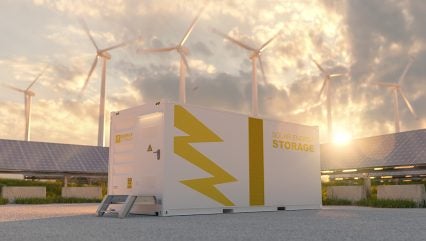
New data from analysts Cornwall Insight has projected that the Australian National Electricity Market (NEM) will increase its solar, wind, and storage capacity by more than 150 GW by 2043. According to Cornwall Insight’s NEM Benchmark Power Curve, the total installed capacity for these technologies is expected to rise from 52 GW in 2025 to 208 GW by 2043.
The increase will be led by solar, including rooftop PV, which is expected to add an impressive 78 GW over the next two decades, with wind and storage forecast to increase by 39 GW and 40 GW respectively.
The rise in installed capacity will be driven by federal and state government policies. This includes the Capacity Investment Scheme, the national renewables auction designed to decrease risk for investors and encourage investment.
Additionally, state–wide auctions and policy incentives included in the Victorian Renewable Energy Target, the New South Wales Electricity Roadmap and the Queensland Renewable Energy Target are expected to encourage investment in renewables.
As more coal plants reach the end of their operating life, renewable build will become key to replacing this lost capacity. However, Cornwall is questioning whether this new capacity can be delivered on time. Despite positive predictions, Cornwall Insight’s forecasts do differ from those of the Australian Energy Market Operator (AEMO). While the AEMO forecasts strong growth in offshore wind, the sector remains nascent in Australia with project delivery assumptions still untested. Concerns around workforce shortages, and other factors, have also led Cornwall Insight to project a longer operating life for coal plants than the AEMO, as the necessary renewable infrastructure will not be built quickly enough to replace lost capacity.
Thomas Fitzsimons, Cornwall Insight, senior modeller: “Our forecasts show the NEM will go through a significant transformation over the next two decades, as both state and federal governments work towards their renewable energy targets. The projected increase in solar, wind and storage capacity across the NEM will see larger states follow South Australia’s lead (as highlighted last month in the International Energy Agency’s report, ‘Integrating Solar and Wind’) as pioneering, high-renewable penetration systems.”
“While our projections are positive, there are still a number of hurdles that need to be overcome if the energy transition is to go smoothly, not least workforce shortages. Labour constraints limit the rollout of the new technologies (including offshore wind) and the unglamorous but essential network reinforcement projects which Australia needs. That said, with robust government policies and well-structured investment frameworks to broaden the technologies on offer in the NEM, the path to a greener future will become clearer and more attainable.”






